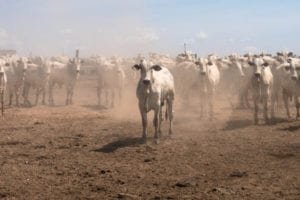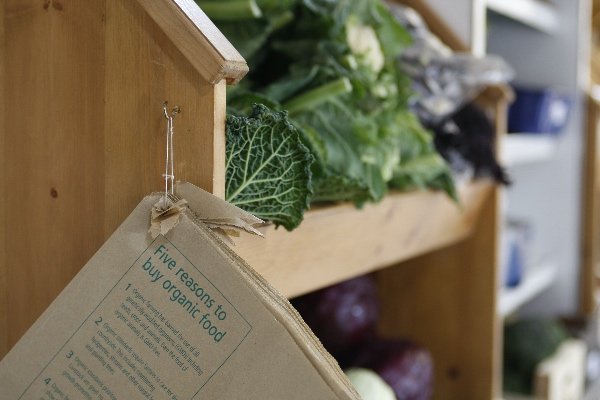Land for meat production
Worldwide, around 38% habitable land is used for industrial animal agriculture, equivalent in size to the United States, Russia, China and India combined.
In terms of water, 16% of freshwater withdrawals every year go to animal agriculture, while in the area of global greenhouse gas emissions 14% come from industrial animal agriculture in the process of food digestion.
In contrast, plant-based protein alternatives are not only animal-free, but also require significantly less resources in all three categories.
The quantified results of the study show that in the case of land use, plant-based alternatives are between 33% and 91% less land intensive.
Impact is most significant for beef with a potential reduction of 91%, while for pork it is lowest at 33%.
In terms of location, Brazilian beef farming has by far the largest footprint, which is mostly attributable to the social costs associated with the large areas of land deforested from the Amazon for cattle farms.
With regards to greenhouse gas emissions, plant-based meat is 69-92% less intensive. Impact is most significant for beef with 92%. Pork and chicken have an equally high potential at 89% and 88% respectively. Egg comes at the end with a still high potential of 69%.
Looking at water consumption, the data show that plant-based protein similarly less resource intensive. Results vary between 95% in the case of eggs and 53% for beef. Chicken (-82%) and pork (-84%) also show considerable potential.
Chinese farming systems have the highest savings potential when shifting their population to a plant-based diet as they use much more water per kg of egg compared to Europe and the US.
Plant-based impacts
Overall, the environmental footprint of plant-based alternatives has proved to be significantly lower than their animal counterparts across all products, locations and farming systems.
Although there is much less variation in the impact between plant-based alternatives compared with animal products, there are still some significant differences – ranging from $0.18 to $0.60 of impact per kg.
Variation between the environmental impact of alternatives is primarily caused by the choice of protein substitute ingredient included in the recipe, which can make up by weight anything from 15 to 45% of the product.
Additionally, where oils make up a large proportion of the recipe, the environmental footprint can increase significantly.
Greenhouse gas (GHG) emissions per product can vary from 1.4t CO2/t (protein isolates) to 3.7t CO2/t (protein concentrates). The more highly processed an ingredient, the higher the GHG emissions produced.
The lowest land use is those of mung bean protein isolates (0.05ha) while isolated proteins (0.81ha) and textured vegetable proteins (0.78ha) use most surface. The variation in water consumption is also considerable, ranging from only 61m3 for mung bean protein isolates to 309m3 for soy protein isolates.
 Play Video about This Rock Might Just Save The World
Play Video about This Rock Might Just Save The World Play Video about Play 2 hours of rock
Play Video about Play 2 hours of rock Play Video about Play 2 hours of brook
Play Video about Play 2 hours of brook Play Video about Play 2 hours of sheep
Play Video about Play 2 hours of sheep















































